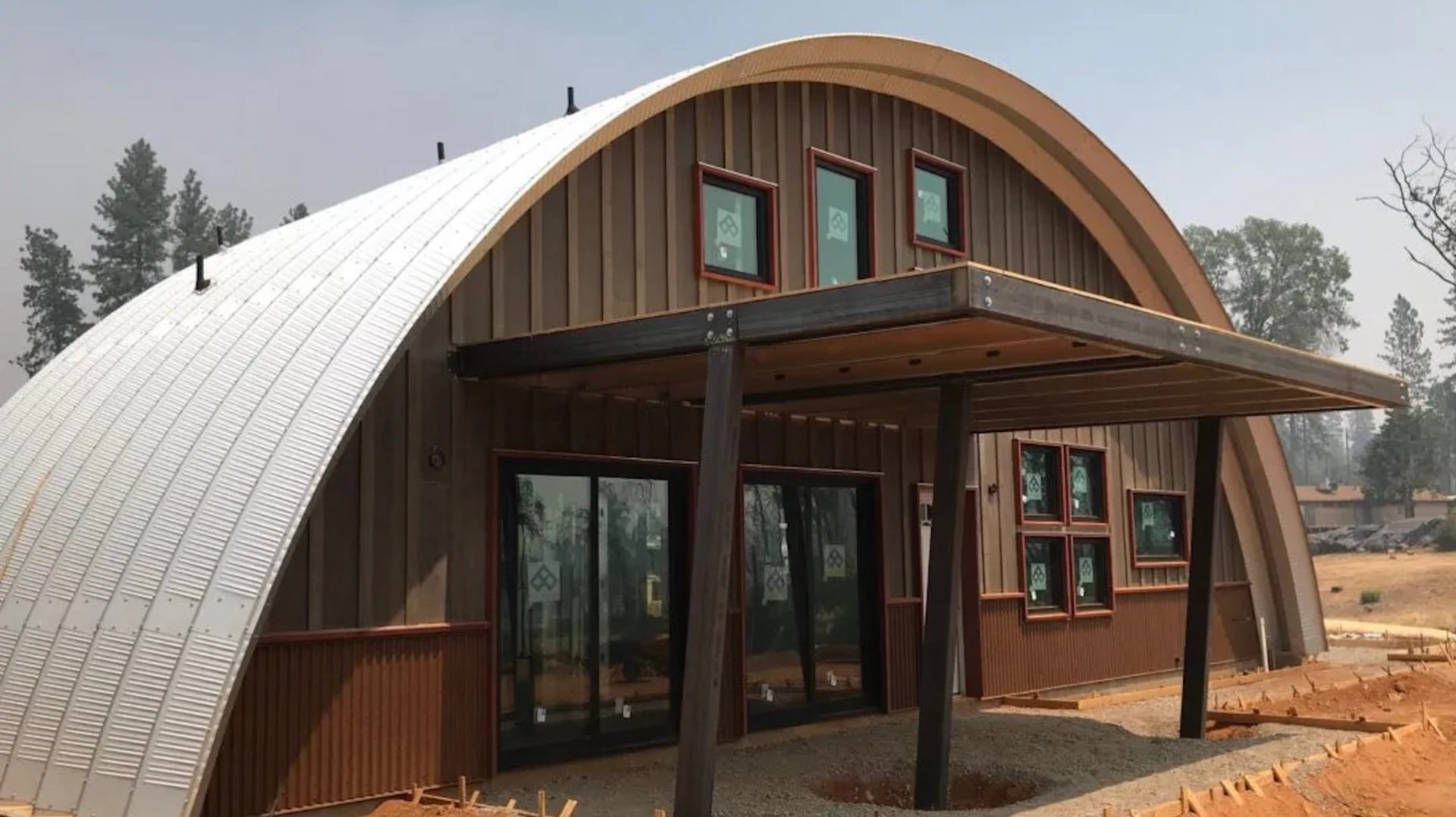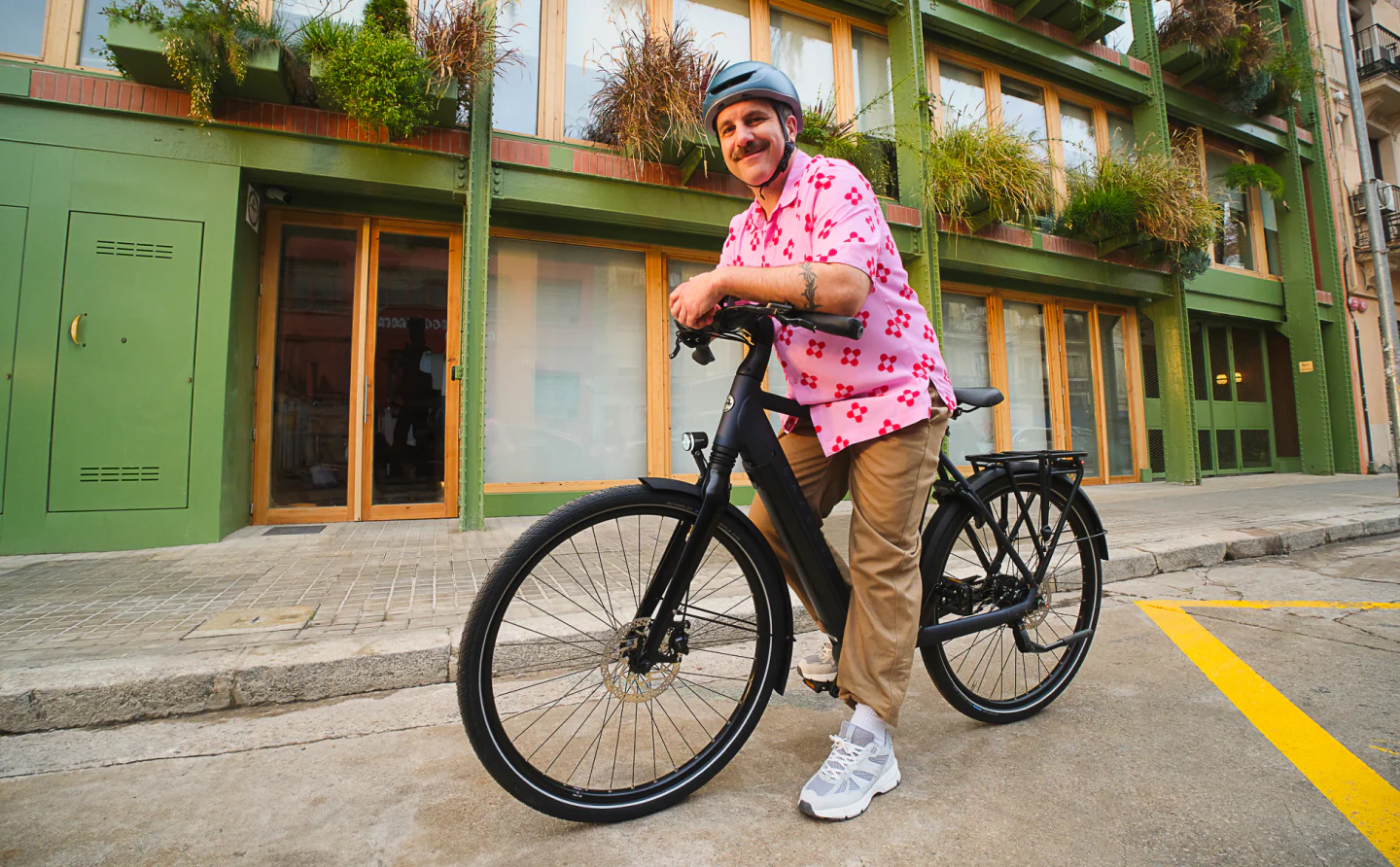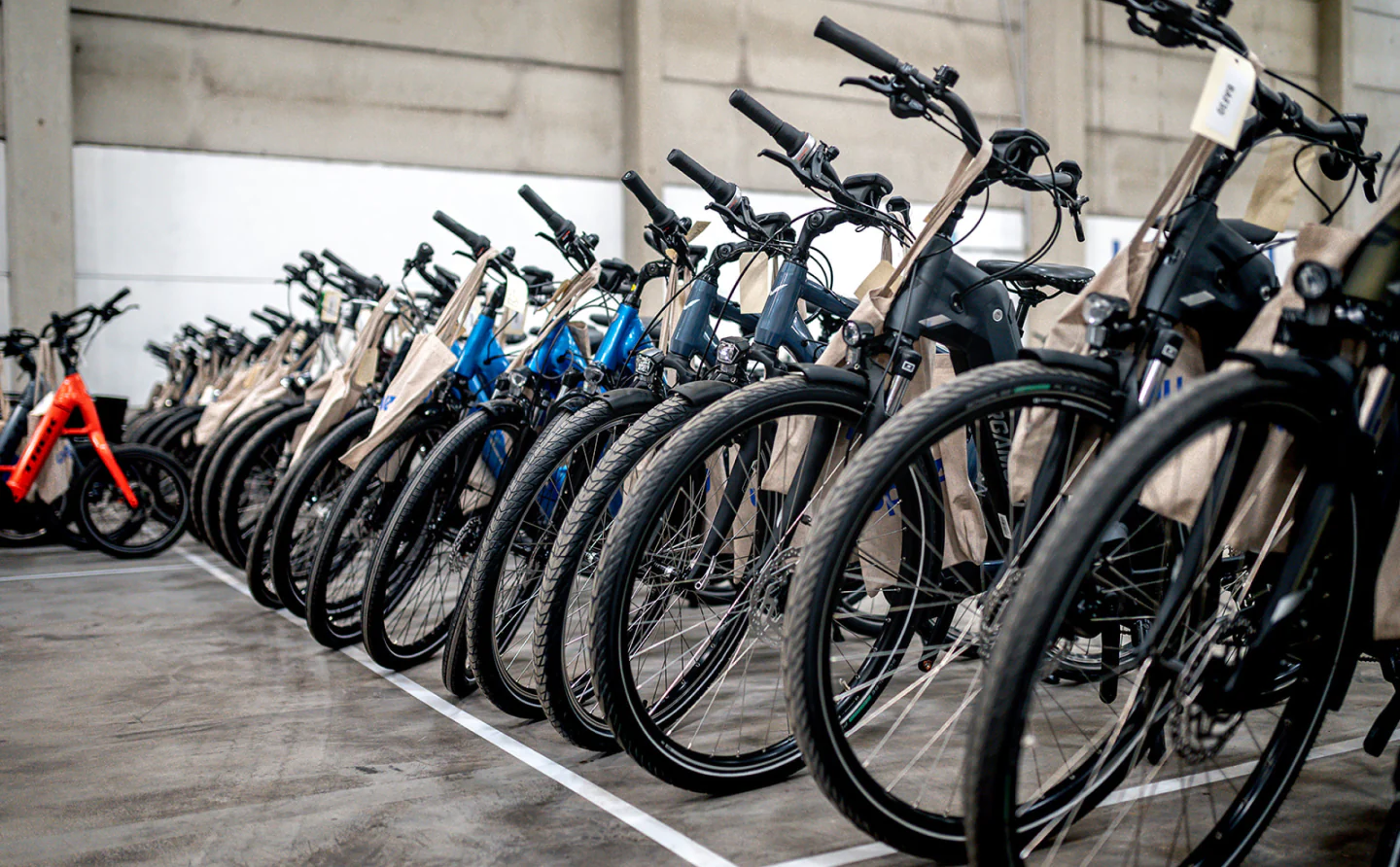Homeowners across the country are unfortunately being forced to worry more than ever about extreme weather events caused by the changing weather patterns. And some of those homeowners are taking action by buying a type of disaster-resistant domicile called a Q Cabin.
The Q Cabin, created by an architect and entrepreneur named Vern Sneed, consists of a frame made out of a half-circle of non-combustible steel. As Sneed explained to the East Bay Times, the part of a traditional house that is most vulnerable to fire is the roof — with Q Cabins, the curved, non-combustible roof gives a fire nowhere to be sucked into.
While the end result may look a little strange to some — the New York Times described it as "a little like a small, smartly designed airplane hangar" — one person's airplane hangar could be another person's futuristic, modern home.
According to the Q Cabin website, the "sweeping curves" of the Q Cabin "are harmonious with nature and the interiors have huge soaring volumes unmatched in the tiny house industry."
Whether one appreciates the aesthetics of the design or not, one undeniable benefit of the Q Cabin — or other such disaster-proof housing — is the peace of mind that protecting yourself and your family against wildfires brings. A large Q Cabin is around 1,400 square feet and costs $350,000.
Wildfires have grown more frequent and more severe over the last 50 years as global temperatures have risen. Southwestern states, like Texas, New Mexico, and Southern California, have seen the greatest increases, but the spread has not been limited to that region.
Watch now: Alex Honnold test drives his new Rivian
According to one study published in the scientific journal Science, there are now twice as many homes in the United States located within wildfire perimeters as there were 30 years ago.
Luckily, Q Cabins is not the only company looking to give people the reassurance that disaster-resistant housing can bring.
One company in the Philippines is manufacturing a new type of construction material it calls "structurally insulated panels" that can withstand many types of natural disasters. In Washington state, architects have built a "Tsunami-proof house" in Puget Sound. And there are many other examples.
Join our free newsletter for weekly updates on the coolest innovations improving our lives and saving our planet.
TCD Picks » Upway Spotlight















